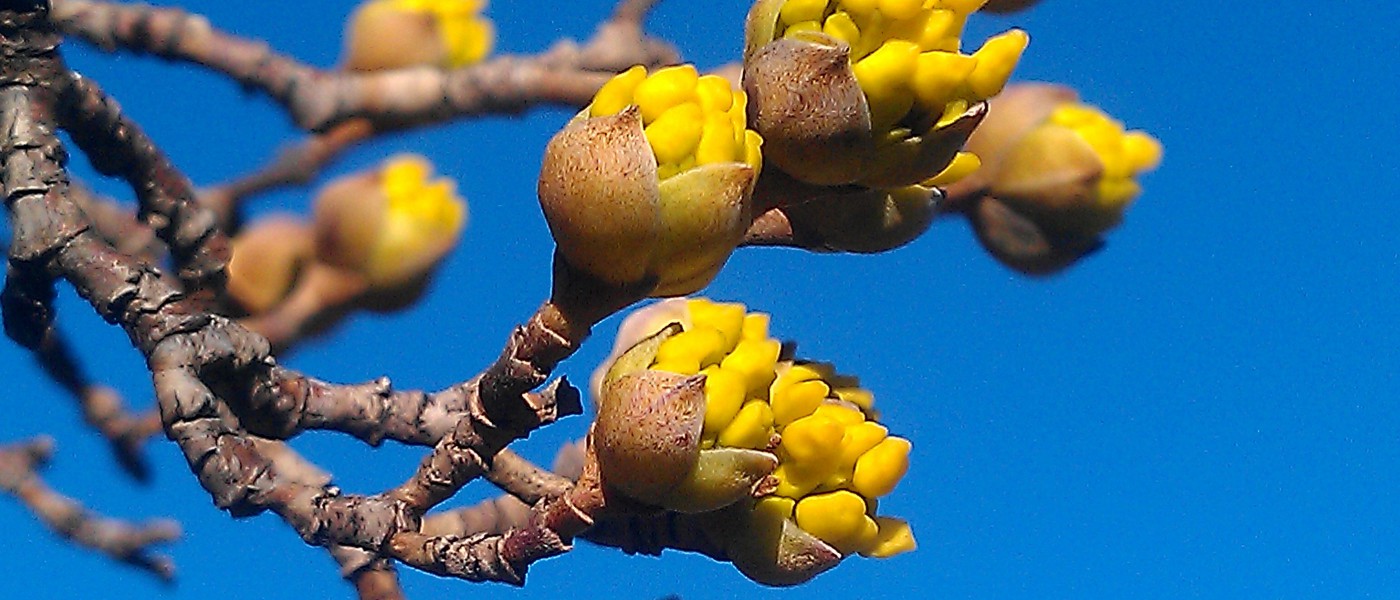A Budding Crisis?
I’ve worked with trees for more than 20 years, and this is one of warmest winters I can recall. How are BBG’s trees handling it? The Asiatic dogwoods (Cornus officinalis) in the Plant Family Collection and the Cornelian cherries (Cornus mas) at the south end of the Osborne Garden are budding now, about two weeks ahead of schedule. These Asian and European natives usually lead the pack, and others are likely to follow soon. The ‘Okame’ cherries (Prunus ‘Okame’) along Cherry Walk are starting to swell now and probably aren’t far behind. Still, some things that I thought would bud early, like the Persian ironwoods (Parrotia persica), north of the Rock Garden, don’t seem to have been fooled by the weather.
That’s because not all trees are equally sensitive to warm temperatures. Budding time is determined by an individual species’ phenology—the unique and complex way it responds to small variations in climate. Some trees may be more sensitive than others to temperature or to the increase in available moisture from unfrozen ground. Others take their cues more readily from the amount of daylight they receive, which has of course remained stable. So don’t expect to see a straightforward shift toward early budding this year. Instead, we’ll probably see trees budding out of sequence, with some continuing to go several weeks ahead of schedule and others sticking closer to their historical times.
The most immediate danger in all this for BBG’s collection is a hard frost or ice storm that could still arrive and destroy these early buds, which would make for a less-than-spectacular spring display. In the long term, most trees would be able to bounce back fairly easily from a single off-kilter year, but too many years in a row would certainly have a greater affect on a wide variety of trees, here and around the globe. Orchard trees and those in the wild face even more pressure, since damaged buds affect their fruit yields and ability to propagate. Another factor is the absence of pollinating insects during the crucial window when they’re needed.
Early budding and blooming also affect birds and other wildlife. Many birds and insects rely on the nectar and pollen provided by plants at particular times of the year. And if flowers are damaged as a result of too-early emergence, there will be less fruit for wildlife later in the season. Also, many birds have their young just as certain insects are feeding on the new leaves of trees. If trees leaf out too early, those insects may be gone by the time the chicks hatch. There are so many complex connections like these in nature that it’s a great mystery how all of this will play out. Time will tell. Observing the natural world carefully will help uncover small parts of its story.


